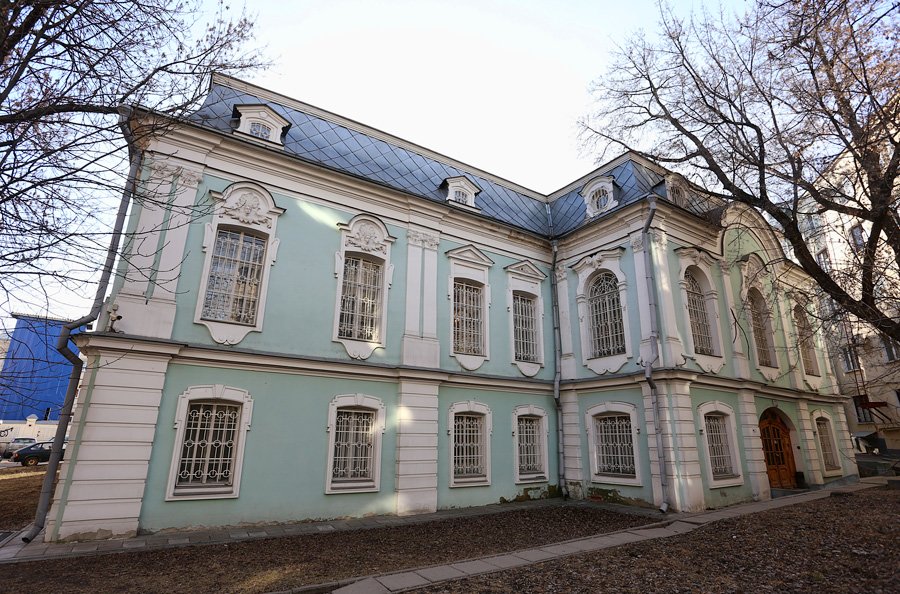В глубине двора Покровки, 4, находится бывший главный дом усадьбы князей Долгоруких — особняк в стиле барокко, в основе своей имеющий палаты 17 века. В 1812 году здесь помещалась французская полиция. Здесь же проходил суд над 26 московскими поджигателями.
Двор князей Долгоруковых некогда был весьма обширен и выходил садами на Покровку, в Колпачный и Старосадский переулки. Среди первых владельцев называют тестя царя Михаила Федоровича Лукьяна Степановича Стрешнева и даже Малюту Скуратова. От Стрешнева дом переходил к К.П. Нарышкину, Бутурлиным, князю К.С. Кантакузену. Наконец, в 1744 году палаты выкупает князь Долгоруков, который присоединяет два соседних участка и осуществляет перепланировку усадьбы и перестройку палат (под руководством архитектора В. Яковлева) после чего дом попадает в «альбомы Казакова». После смерти Долгорукова в 1782 году начинается длительная судебная тяжба по владению усадьбой.
24 сентября 1812 года в доме князя Долгорукова начал действовать военно-полевой суд, или военная комиссия, под председательством генерала Мишеля, командира 1-го гренадерского полка гвардии. Под караулом, без оков, сюда были приведены 26 обвиняемых в московских поджогах. Сохранились протоколы комиссии, где, в частности, признается факт множественных самосудов, когда французские солдаты убивали на месте любого человека, взятого с чем-либо, могущим вызвать пламя, даже свечой. Из 26 человек 13 были преклонного возраста, возможно, из-за этого не покинувшие город. Девять были солдатами московской полиции. В отношении 10 человек комиссия посчитала вину доказанной, они были приговорены к расстрелу, который должен был свершиться в течение 24 часов. Остальных 16 отправили в тюремное заключение «для избежания вреда, который бы они причинить могли»
Одновременно велась работы по созданию полиции. Первоначально эта работа находилась в ведении Мортье и генерала Мийо, с 20-х чисел сентября к ним присоединился Лессепс. 12 октября появилось объявление о создании police génèral. В нем сообщалось, что «всеобщая полиция учреждается в доме Долгорукова на Покровке в приходе Успения. Канцелярия открыта будет каждодневно от 8 часов утра до 7 вечера. Генерал-комиссары или полицмейстеры давать будут каждодневно аудиенции по утру от 9 до 10, а ввечеру от 3 до 5 часов, кроме воскресенья». Неподалеку, в доме Румянцева на Покровке, разместился московский муниципалитет. Структура и состав городской полиции были следующие. Во главе 2 генеральных комиссара (обер-полицмейстера): Ф. Виллерс и Пюжо. Территория города была разделена на 20 участков, во главе которых были участковые комиссары (приставы). По мнению исследователей, организация муниципалитета и полиции нужны были для того, чтобы отвести от Великой армии любые подозрения в организации уничтожения Москвы.










%20BEL_0521.jpg&w=1920&q=75)





